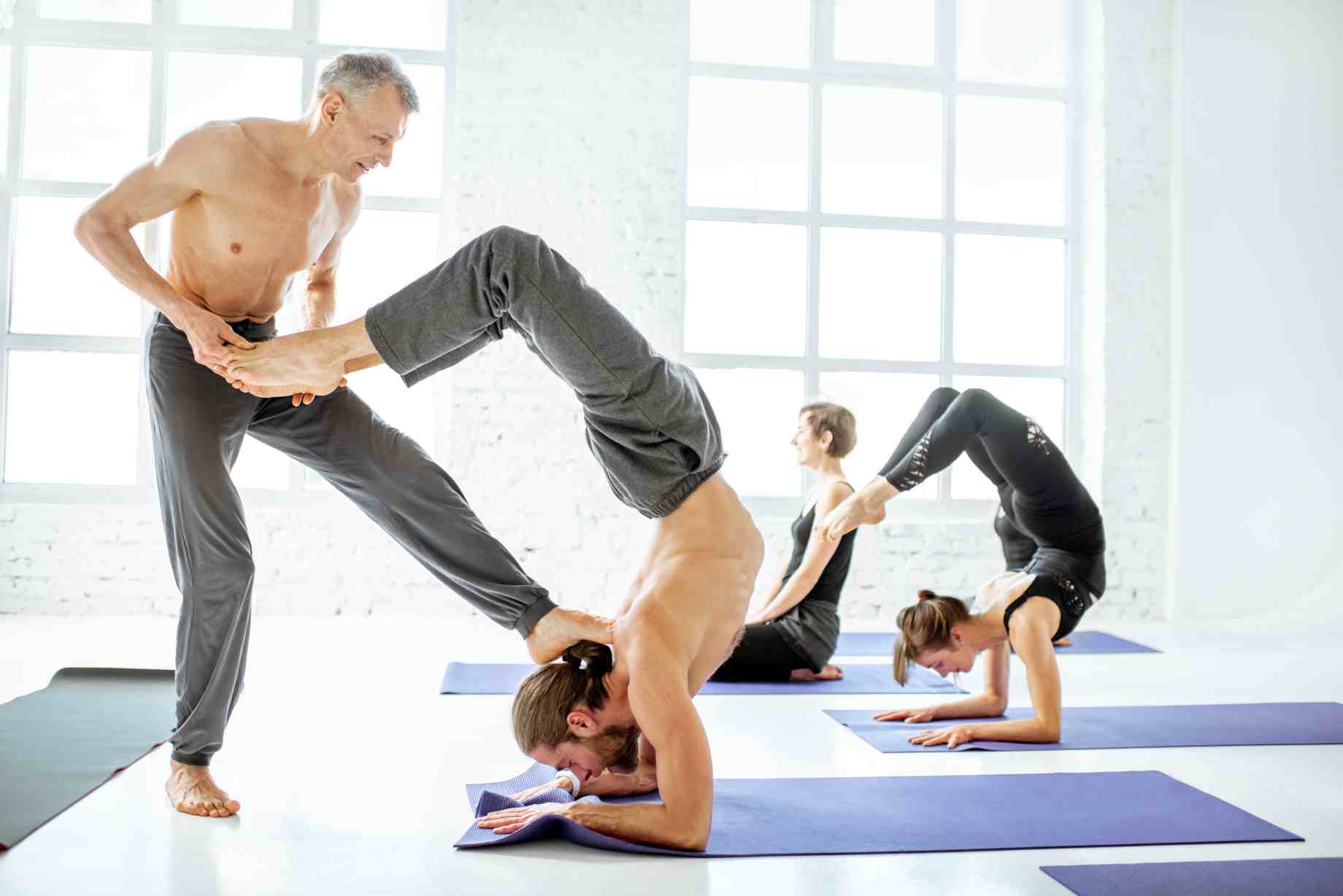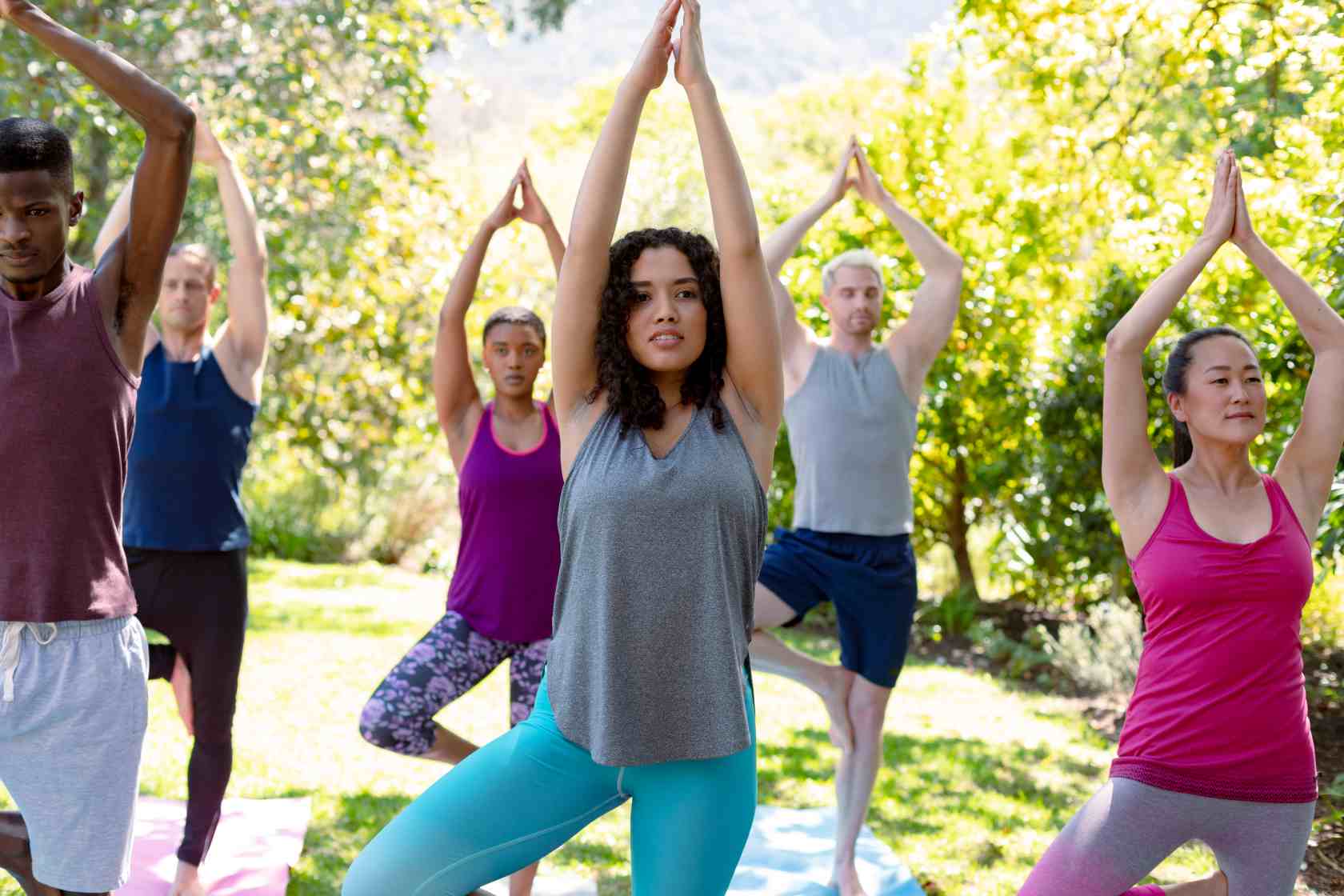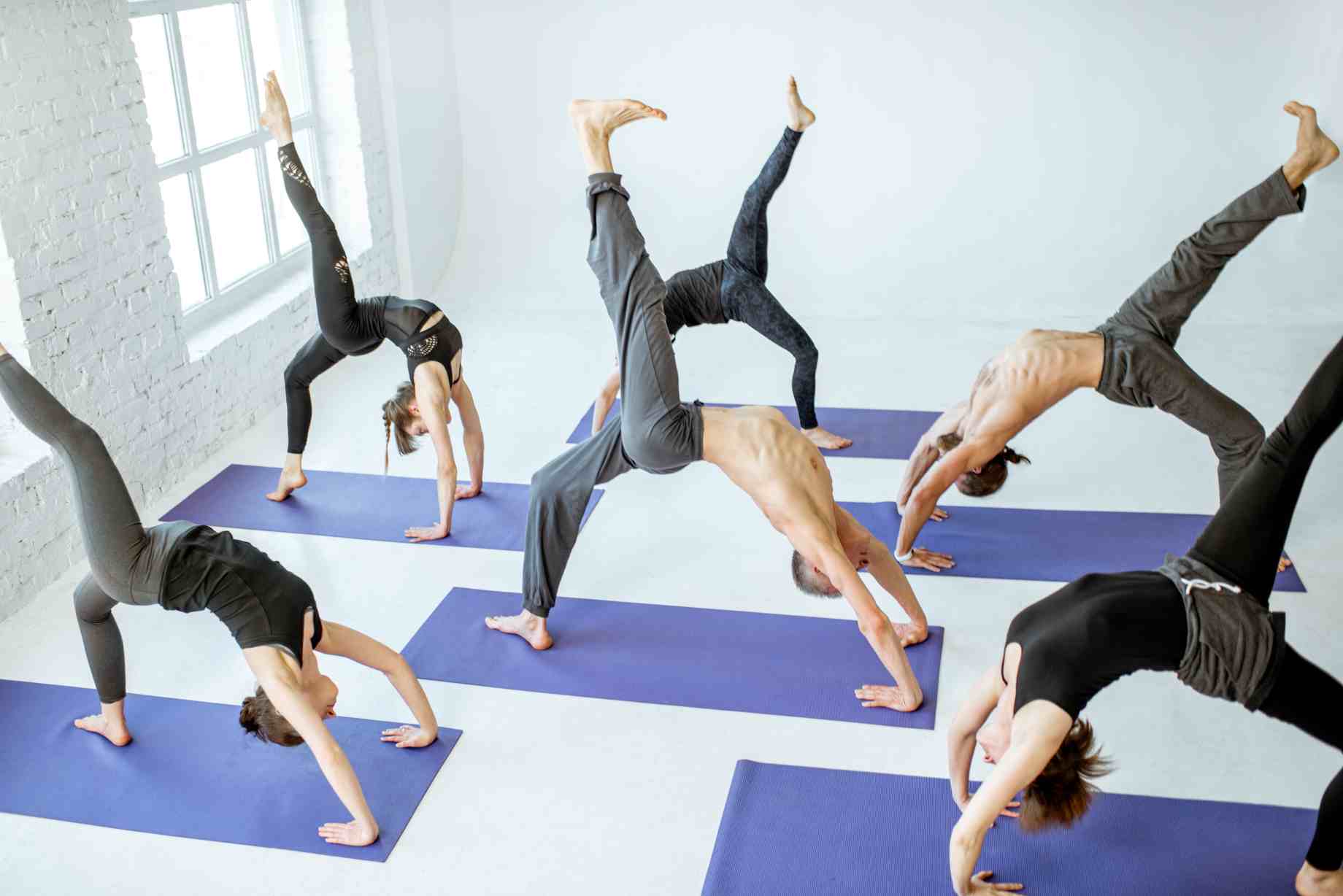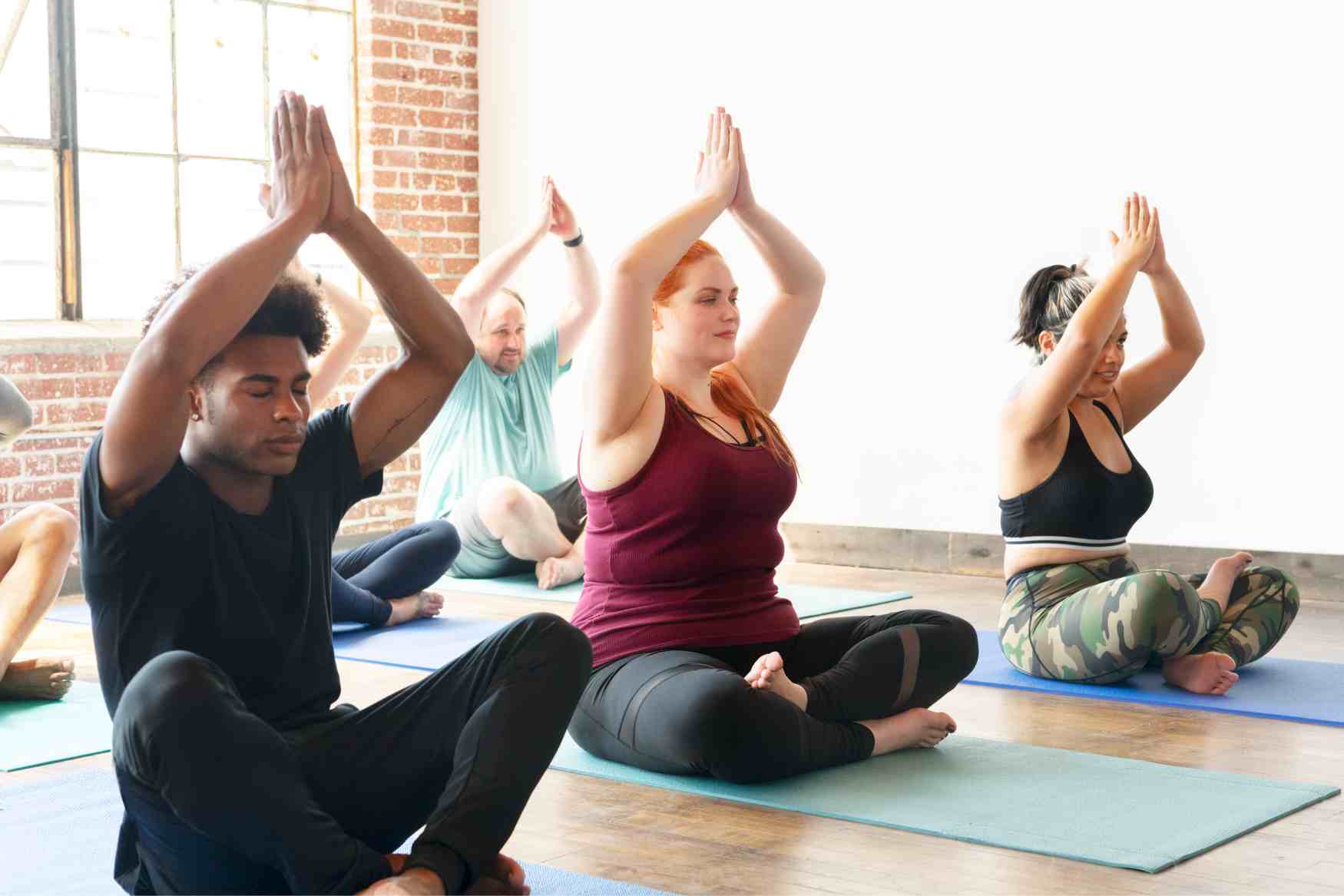Difference Between Yoga and Power Yoga

In the current world of growing stress and health concerns, practising yoga regularly is often considered a way to ensure a healthy lifestyle. Once you get used to it, yoga can be addictive and guarantee an excellent fitness level. Many wonder if they should practice or power yoga to get quicker results.
Are you curious to find out the difference between power yoga and yoga? Then, keep reading this article to get a comprehensive understanding.

Table of Contents

What Is Yoga?
Yoga is a long-standing type of physical exercise. In yoga, individuals perform activities that can be both firm and soft. The benefits of yoga include internal and external body stability. With this, individuals can achieve physical fitness, flexibility, mental strength, and peace of mind.
Unlike other forms of physical exercise, yoga offers a blend of physical, mental, and spiritual practices. The idea is to bring harmony between mind and body. As a practitioner, choosing the right posture is up to you.
What Is Power Yoga?
In simple terms, power yoga is the dynamic version of traditional yoga. It is a more intense form of physical exercise that mainly focuses on building muscles and strength. Unlike yoga, it does not include meditation, concentration, or mental well-being. Power yoga should be the right choice if you are simply looking for a vigorous workout but not a gym activity.
Here, a static form of practice is converted into a dynamic flow of exercises. It helps to build strength and endurance and keeps you in shape for a long time. Instead of approaching different yoga poses, this type of yoga maintains a flow from one pose to the next.
What is the Difference Between Yoga and Power Yoga?
Now, you must wonder about the difference between power yoga and yoga. Even though they sound similar, there are some major differences between them. The following table will help you understand the same.
Which Muscles Are Involved During Power Yoga & Yoga?
1. Quadriceps (Quads)
In power yoga, the quads are engaged in poses like warrior poses, chair pose, and lunges. Traditional yoga also involves poses that engage the quadriceps, such as Virabhadrasana (warrior pose), Utkatasana (chair pose), and other standing poses.
2. Hamstrings
Power yoga incorporates dynamic movements and holds in poses like Uttanasana (standing forward bend) and Surya Namaskar (sun salutations), which actively stretch and strengthen the hamstrings. Yoga also includes poses that stretch and strengthen the hamstrings, such as Uttanasana and Janu Sirsasana.
3. Core Muscles
Core muscles are extensively engaged in power yoga to maintain balance and stability in plank, boat pose, and variations of abdominal exercises. Traditional yoga also emphasises core strength through Navasana (boat pose), Bhujangasana (cobra pose), and tree pose.
4. Gluteal Muscles (Glutes)
Power yoga incorporates poses like warrior poses and chair pose, which involve the gluteal muscles to stabilise the hips and legs. Yoga poses such as warrior poses, bridge poses, and balancing poses require activation of the glutes for stability and strength.
5. Deltoid Muscles
Deltoid muscles are engaged in power yoga during poses like downward dog, plank, and arm balances such as crow pose. Yoga also includes poses that engage the deltoids, such as downward dog, Chaturanga Dandasana (four-limbed staff pose), and various arm balances.
6. Latissimus Dorsi (Lats)
Lats are engaged in power yoga during poses like downward dog, plank, and balancing poses that require upper body strength and stability. Yoga poses like downward dog, plank, and arm balances also engage the lats. These poses help in improving upper body strength and posture.
7. Calf Muscles
Calf muscles are worked in power yoga during poses like downward dog, warrior pose, and any pose that involves rising onto the balls of the feet or jumping transitions. Yoga poses such as downward dog, warrior pose, and balancing pose engage the calf muscles for stability and strength.
What are the Benefits of Power Yoga?

Power yoga is known to be fast-paced and improve immunity. Apart from these, the benefits of power yoga are as follows:
- Boosts Immunity: Power yoga can improve your immune system by stimulating the lymphatic system to remove all toxins from your body. Moreover, it reduces stress hormones and develops a better metabolism. This way, you can digest food quickly and are less prone to falling sick.
- Improves Sleep Pattern: There is a standard connection between physical activities and sleep routines. Power yoga includes intense physical workouts and helps you feel tired and sleep better at night.
- Builds Muscles: Power yoga effectively builds and strengthens muscles without involving weights. One of the most significant advantages of this type of yoga is that it attracts more people to practice it.
- Improves Lung Capacity: As power yoga improves physical endurance, you can see a clear improvement in your lung capacity. As a result, there will be fewer problems with shortness of breath and asthma issues.
- Improves Heart Health and Blood Circulation: The intense workout routine helps raise and sustain your heart rate. In addition, an advanced blood circulation process helps you control high blood pressure.
What are the Benefits of Yoga?

On the other hand, yoga is also beneficial in various aspects. You should be aware of these to identify the proper workout routine. Here are the benefits of yoga:
- Relieves Pain: Yoga effectively handles and addresses back and joint pain. As you stretch your body and relax the joints, the pain suppressed in these will likely reduce. It also improves your mobility.
- Improves Heart Health: Regular yoga practice will help reduce stress and body-wide inflammation. Moreover, it helps to prevent heart diseases by controlling issues like high blood pressure and excess weight.
- Improves Mental Health and Well-being: Yoga focuses on mental health besides working on physical features. It promotes meditation and concentration to enhance mindfulness and stress management. Therefore, it can contribute to a healthy sleep routine.
- Promotes Energy and Positive Moods: Regular yoga helps increase physical and mental energy. In addition, it can help encourage fewer negative feelings and boost energy and motivation with a fixed workout routine.
Yoga vs Power Yoga - Which is Better?
Now that you know the benefits of power and yoga, you might better understand how to select a suitable workout routine. You should choose power yoga workouts if the following conditions appeal to you.
Power yoga is the right option if you plan to build muscles without including weight training. It can enhance your muscle strength through simple positions.
If your ultimate goal is to strengthen your muscle strength and endurance, you should choose power yoga over regular yoga.
Power yoga will be suitable if you cannot approach certain complicated yoga poses and feel comfortable engaging in a flow of connected positions.
This workout routine will suit you if you are willing to engage in an extreme physical workout instead of simply stretching.
On the other hand, regular traditional yoga should be your go-to workout routine if the following conditions appeal to you.
Traditional yoga is suitable if you are looking for a slow, straightforward workout routine with less physical pressure.
Traditional yoga can improve heart health and manage high blood pressure, so if you are facing such issues, you can try this routine.
If you wish to improve your physical and mental health simultaneously, traditional yoga is a better option than power yoga.
Traditional yoga can relax your mind and improve your concentration. If this is a priority, then you should select this workout routine.
Is it Safe to Indulge in Both Power Yoga and Yoga?
It is safe to practice both types of yoga because they are complementary. If you are willing to take your traditional yoga lessons to the next level, practice power yoga anytime. Do both in equal intervals to reap the benefits.
Although brief hold intervals are crucial for warm-ups, longer hold times are preferable for cool-downs. First, you should hold each pose for 45 to 60 seconds; the duration may vary based on the pose. You can reap the benefits of power or traditional yoga in as little as 10 minutes, so a cool-down doesn't have to be long.
How Much Yoga and Power Yoga Is Suitable for a Week?
Power and traditional yoga are suitable for use every day of the week. The time limit depends on the individual and how many yoga poses are packed into one routine. A 30-minute to 1-hour power yoga or yoga is enough for one person daily for a week.
Ultimately, the "right" amount of yoga depends on your preferences, goals, and physical condition. It's advisable to consult with a yoga instructor or fitness professional to tailor a program that suits your needs and abilities.
Who Should Avoid Yoga and Power Yoga?
Though yoga is a common activity performed by many, there are a few who should avoid it. Here are some points on who should avoid power yoga and yoga in general:
Certain Medical Conditions
Individuals with uncontrolled high blood pressure, cardiovascular diseases, severe osteoporosis, or recent surgeries should avoid power yoga and consult a healthcare professional before starting any yoga practice.
Pregnancy
Pregnant women, especially those in advanced stages of pregnancy, should avoid power yoga and opt for prenatal yoga classes that are specifically designed for expectant mothers.
Injuries
People with acute injuries, such as muscle strains or joint sprains, should avoid power yoga until they fully recover. They might consider gentler forms of yoga or wait until they receive clearance from a healthcare provider.
Severe Joint Issues
Individuals with severe joint problems, such as arthritis in advanced stages, should be cautious with power yoga, as some poses can exacerbate joint pain or stiffness.
Inexperienced Beginners
Those new to yoga and physical exercise should start with gentler forms of yoga to gradually build strength and flexibility. Power yoga may be too intense for beginners without proper guidance.
Chronic Health Conditions
People with chronic health conditions, such as diabetes or asthma, should practise yoga under a qualified instructor who can modify poses.
Elderly Individuals
Older adults with frail or limited mobility should avoid power yoga and opt for chair yoga or other gentle forms of exercise that suit their physical capabilities.
Fatigue or Exhaustion
Individuals who are severely fatigued or exhausted should avoid power yoga sessions that require significant physical exertion. They should prioritise rest and recovery instead.
Uncontrolled Stress or Anxiety
While yoga can be beneficial for managing stress and anxiety, power yoga may be too vigorous for those experiencing high levels of stress or anxiety. Gentle yoga or meditation may be more suitable initially.
Lack of Proper Instruction
Practising power yoga without proper instruction or supervision can increase the risk of injury. Learning from a certified yoga instructor who can guide proper technique and modifications is important.
Myths vs Facts about Power Yoga

Power yoga is a very effective exercise practised by people of all shapes and sizes. Here are the myths and facts about power yoga:
Myths vs Facts about Yoga

Yoga is a common exercise that many people routinely practise. Here are the myths and facts surrounding yoga:
Hopefully, now you know all about the difference between power yoga and yoga. As this article pointed out, power yoga is an intense physical workout routine compared to traditional yoga, which is more about mental well-being. Therefore, selecting your workout routine should know its benefits and drawbacks.
You can blend power and traditional yoga into your routine to get the best benefits. Power yoga and yoga is equally suitable for beginners of all ages, shapes and sizes.
Affordable Health Insurance Solutions for You and Your Loved Ones














